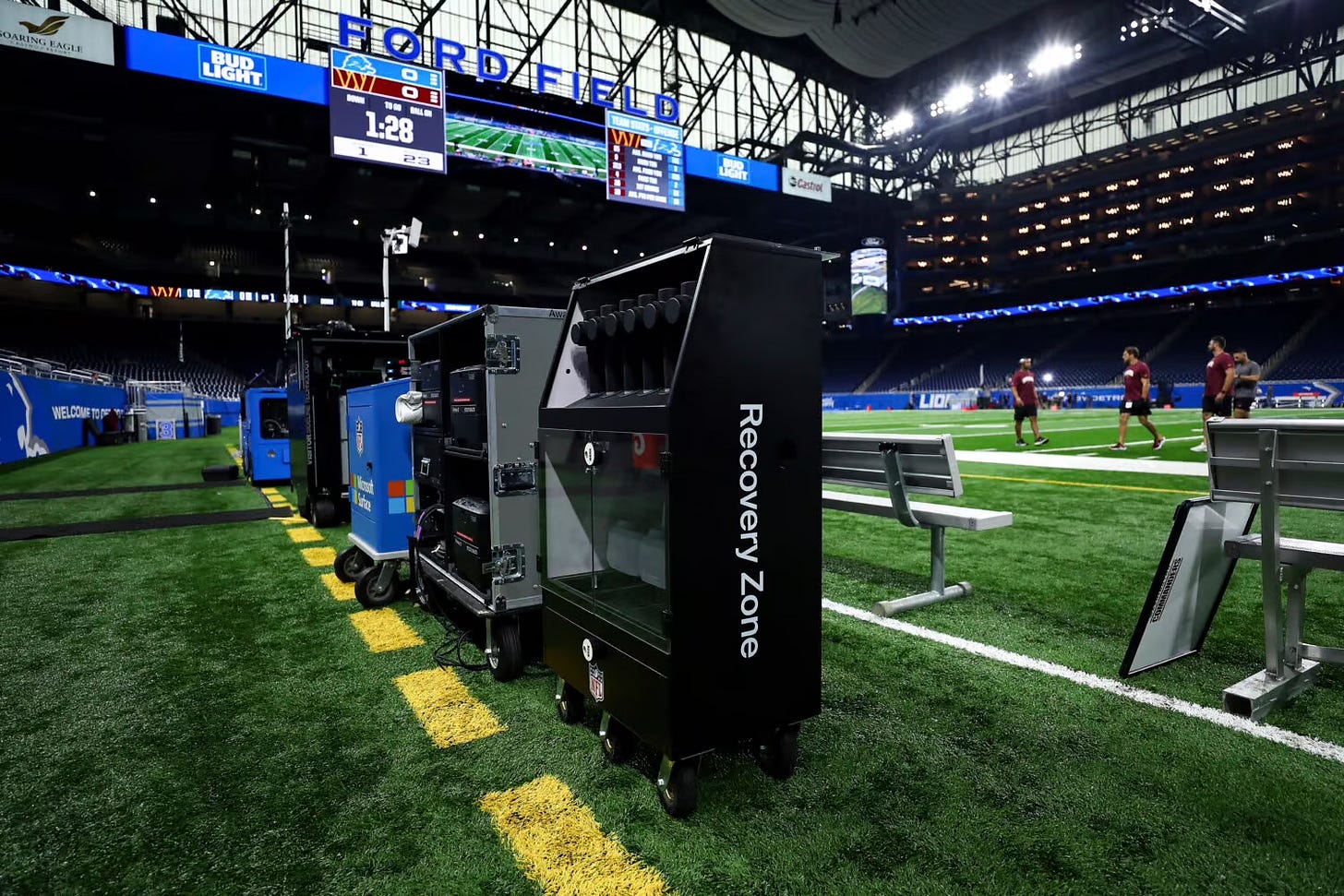Attention, Preference, and the Hyperice Experiment
What I learned about the NFL and category education
I heard this story over lunch last week. A friend mentioned that Hyperice, the recovery-tech company behind the Hypervolt and Normatec, may have solved one problem and created another. The claim was simple enough. Teach millions of people why recovery matters by partnering with the NFL, which seems to have worked, and then spend a lot of time chasing copycats on Amazon. I nodded like a normal person and then went home and opened fourteen tabs. This is my confession. I nerded out and pieced together a timeline I thought was worth sharing.
Category education, in plain English, means you are not just selling a product. You are teaching people what the product is, why the underlying problem matters, and how this thing could fit into everyday life. It is the work that happens before potential customers even decide if they have a preference. That can sound like homework from marketing class. The fun part, at least for me, is seeing how a company tries it at full scale and what follows.
Here is what my reading suggests. In late 2020 the NFL named Hyperice its Official Recovery Technology Partner. That appears to have put the devices inside all 32 clubs and, more importantly, on camera. If you watched a game that season, you may have seen trainers use the tools and heard broadcasters say the brand name out loud. Search interest seems to have climbed. Some retailers who had been slow to respond reportedly called back. If that is right, the lesson on national television did what it usually does. People moved from “what is that” to “which one should I buy.”
Then the next chapter arrived. Once the category made sense to regular people, the marketplace did what marketplaces tend to do. A lot of similar products showed up on Amazon at lower prices. The company that paid to teach the lesson now had to explain why its version was worth more than the near-matches in your cart. Inside Hyperice, I would venture to guess that the weekly rhythm shifted. Launch plans still moved forward. Two new kinds of work probably took more time. One was federal litigation, which follows a slow calendar of filings and hearings. The other was Amazon’s in-platform patent process, a faster, platform-run procedure focused on whether a specific listing should stay up or come down for IP infringement. Glossy creative doesn’t matter here. Documentation, dates, and diagrams do.
The press covered the back-and-forth like a trade. Hyperice files a suit. A rival responds. More names enter the story. From the bleachers it looks dramatic. From the inside it likely feels like the bill that shows up when an awareness play succeeds. You taught a lot of people that recovery matters and now everyone wants to sell recovery to them. The real question is whether there is enough customer preference and enough protection to keep a lead.
Why did this pull me in? Because using the NFL as a classroom seems to have forced the rest of the company to mature faster. A league partnership is rarely just media. It can pull forward distribution deals. It can test supply chain discipline. It can push customer support to handle a higher volume of questions. It can also bring copycats sooner than expected, which means legal and operations need a plan. Many brands reach for a big stage and then discover their systems cannot carry the weight. Hyperice appears to have built those systems in real time, in public, with a lot of people watching. That is a hard thing to do.
This thread also lines up with a few traps marketers learn to respect. Attention does not automatically become advantage. Teaching the problem gives attention to everyone in the category. How much of that attention can any one brand really hold? The part that turns attention into category leadership sounds unromantic. Make the product reliable. Prove the claims. Keep shelves stocked when interest spikes. Answer emails.
Another trap is underpricing the follow-on costs. You set a budget for awareness campaigns. It is easy to forget to set one for enforcement and channel management. Those costs show up later and can eat margin if you ignore them. A third trap is treating borrowed credibility as permanent. The NFL helps at the start. After that, trust is earned the slow way.
Was this a bold bet with real upside, or a downside risk that should have been obvious from the start? My guess is that it depends on timing. If you buy mass awareness before distribution, service, and defensibility are ready, you may gift the market a lesson and leave the door open. If those pieces are already in place, the same awareness can harden your lead. The stage tends to amplify whatever foundation is already there.
Yes, this does sound like I spent an evening with press releases and law firm blogs. That is accurate. I like this story because it is messy and practical. It suggests a path, not a rule. I plan to keep watching Hyperice and the copycats to see which way the line bends.


